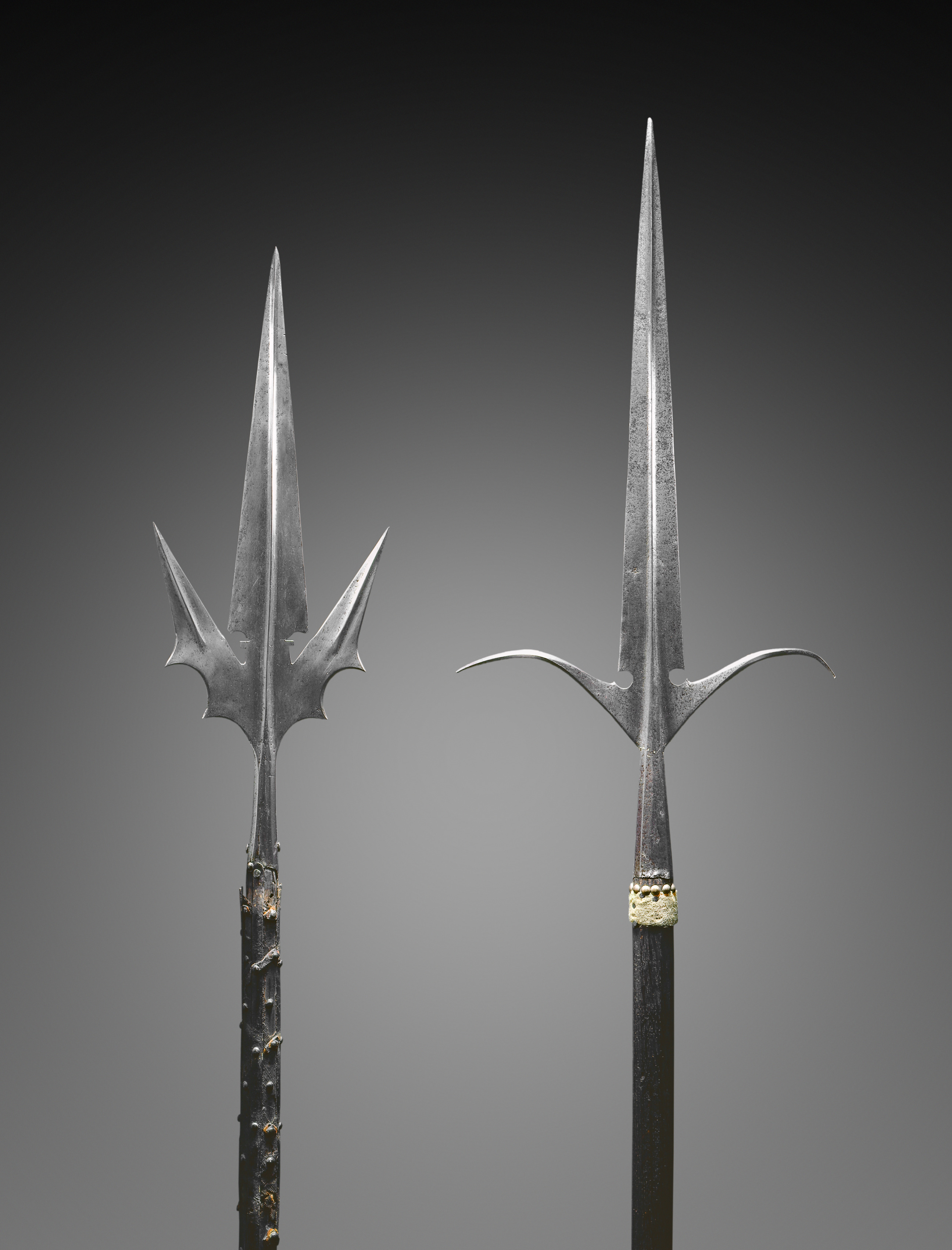The Cleveland Museum of Art
Collection Online as of April 20, 2024

Corsèque
c. 1520
Overall: 269.2 cm (106 in.); Blade: 36.5 cm (14 3/8 in.)
Gift of Mr. and Mrs. John L. Severance 1916.1535
Location: 210A Armor Court
Did You Know?
The corsèque is said to have originated in Corsica, from where it takes its name.Description
The corsèque is a pole arm with a symmetrical three-pronged head consisting of a central double-edged blade and two sharp, upturned wings. The side blades served several functions: as guard to protect the soldier's hand when a thrust was delivered with the central blade; as a hook for unseating a mounted opponent; and to trip the opponent's horse. The corsèque was used mostly in Italy and France from the 1400s to the early 1600s. The version here is sometimes called a chauve-souris after the French word for "bat," since the side blades are thought to resemble a bat's wings.- Richard Zshille(1847-1903), Leipzig, Germany?-1916Frank Gair Macomber (1849-1951), Boston, MA, sold to the Cleveland Museum of Art1916-The Cleveland Museum of Art, Cleveland, OH
- Catalogue of Arms and Armour. Vol. 2, 16th century. [Boston, Massachusetts]: [Frank Gair Macomber], [1900-1915]. Mentioned and Reproduced: No. (45) 50 archive.orgGilchrist, Helen Ives. A Catalogue of the Collection of Arms & Armor Presented to the Cleveland Museum of Art by Mr. and Mrs. John Long Severance; 1916-1923. Cleveland: The Cleveland Museum of Art, 1924. Mentioned: p. 189, H26 archive.orgFliegel, Stephen N. Arms and Armor: The Cleveland Museum of Art. [Cleveland, Ohio]: The Museum, 1998. cat. no. 98, p. 167Fliegel, Stephen N. Arms & Armor: The Cleveland Museum of Art. [Cleveland, Ohio]: Cleveland Museum of Art, 2007. cat. no. 107, p. 187Dobson, Chris. Beaten Black and Blue: The Myth of the Medieval Knight in Shining Armour. Sant'Albano Stura, Italy: Chris Dobson, 2023. Reproduced: p. 61, fig. 63
- Armor Court Reinstallation. The Cleveland Museum of Art (organizer).
- {{cite web|title=Corsèque|url=false|author=|year=c. 1520|access-date=20 April 2024|publisher=Cleveland Museum of Art}}
Source URL:
https://www.clevelandart.org/art/1916.1535